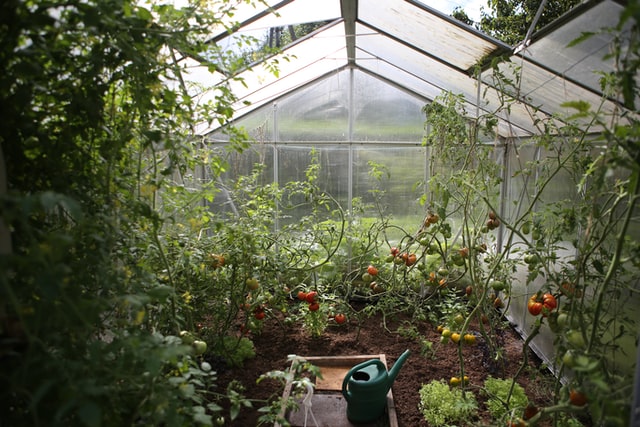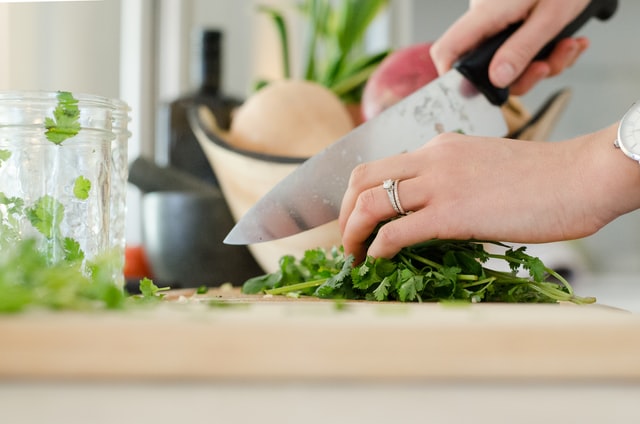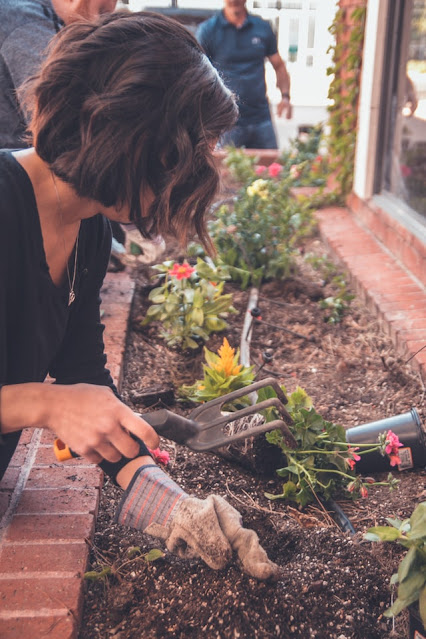 |
Kitchen garden: huge harvest in an exceedingly little space |
Vegetable beds have long left their shadowy existence behind. Today's vegetable patch is ornamental and is formed for the pleasure of horticulture and gathering. This way, you get an outsized crop yield even in an exceedingly little space.
It's been an extended time since the word "garden" inevitably induced the image of various vegetables and gardens. it had been massive, handily set out and divided, with enough crops for a family of many. It's completely different nowadays as a result of the room gardens are usually abundant smaller, however, you continue to need to usher in an outsized harvest from a little space. meanwhile, the vegetable patch has been nearly entirely banished from the gardens, and therefore the terrace, decorative lake, flower border, and field have had to allow manner.
However, a positive trend in recent years has brought with it a brand new search for country life, nature, and down-to-earthiness and has additionally brought room gardens a comeback.
In brief: the fashionable vegetable patch
It wont to be simply practical: nowadays, room gardens mix a spread of fruit and vegetables with a reasonable style in principally little areas.
Decorative figures, stunning rank obelisks, or plants in hand-picked colors produce an associate degree aesthetic impression.
If you plant consistent with the foundations of mixed culture, you'll additionally usher in an upscale harvest in little gardens. Positive effect: some forms of vegetables defend one another from pests.
Mini-gardens in planting baggage supply the chance to garden while not abundant house.
Visually, however, nothing is like the sensible patches of earth from the past: just like the decorative garden, the vegetable patch of nowadays ought to additionally supply one thing to the attention. With its ornamental style, it still provides one thing valuable for the hobby gardener: the thrill of looking at plants germinate, grow, and fruit, having fun gathering and enjoying recent vegetables you have got full-grown yourself, and therefore the sensible feeling of knowing specifically what's in them as a result of you have got hand-picked the soil and fertilizer yourself Has.
The vegetable patch is currently a touch smaller than it had been then. this is often partially because of the smaller plots of land, however additionally as a result the harvest does not need to be used for basic wants. The time issue additionally plays a job, as a result, each square meter additional suggests additional work. during this manner, the vegetable patch has a little however fine space wherever several herbs, some favorite vegetables, and sometimes some fruit are full-grown.
Vegetable beds with decoration
Once the best place has been found - a sunny, protected spot close to the cistern and compost - the setting typically determines the form of the beds. ornamental components that are welcome are rose balls or frolicsome garden figures between the rows of lettuce. Glass bells as a mini greenhouse or clay pots for bleaching vegetables, that are placed over the plants are appropriate as eye-catchers.
The distinction in sensible solutions can even be seen in details like ascension aids for beans: Whereas in the past many wood poles were stuck into the bottom, nowadays {they are|they're} embellished with nice clay caps or the plants are guided upwards on ascension obelisks. Last but not least, color additionally plays a job once summer flowers, varicolored chard, grow between rows of vegetables planted in specific places or lettuce planted sorted by color.
Planting idea: a spread of crops from spring to summer
This sample bed is concerning 10 sq. meters (2.5 x four meters) and was combined consistently with the foundations of mixed cultivation.
The left 1/2 the bed: Peppers and hot peppers don't seem to be planted out till the start of June. Bush beans are planted in mid-May and harvested at the tip of August. Zucchini are solely allowed outside when the last frosts are in mid-May.
Kohlrabi shouldn't be too big: if you seed April, you'll already get pleasure from it in June. Spinach is planted in spring or late summer. The harvest takes place in May/June or within the fall and winter months. Lettuce is planted out from mid-May.
The right 1/2 the bed: Tomatoes ought to be planted out when the late frosts. Add basil to guard against plant attack. Rhubarb may be a perennial and is usually harvested from might to June. Chives additionally sprout once more each year.
The outer leaves of chard are harvested for weeks from the Gregorian calendar month. Carrots and onions defend one another from pests. Dill is planted from April. Next to parsley, radishes don't seem to be attacked the maximum amount by radish flies. Strawberries are a sweet treat at the sting of the bed.
Mini garden in an exceedingly bag
If you do not have the house for a true vegetable patch, you'll additionally plant earthbags. you'll notice the house anyplace and stay mobile. they don't seem to be specifically pretty to seem at, however, if you are handy, you'll build a frame out of untreated wood boards. A 25-liter bag is enough for concerning six lettuce, herb, or strawberry plants or 3 tomatoes. when concerning eight weeks, fertilization is needed.
The planting holes (approx. ten x ten centimeters) are cut out on the highest with scissors. various little holes or longitudinal slots on the undersurface guarantee sensible water evacuation.
Harvest vegetables properly
Anyone UN agency that has fondly cared for and full-grown their vegetables over the summer ought to even be careful once gather. With root vegetables like carrots, radishes, beetroot, or celery, this is often quite uncomplicated, you'll merely pull them out of the bottom. If the soil is extremely dry, for example, it would be an honest plan to loosen the soil with an excavation fork beforehand.
On the opposite hand, you ought to avoid choosing and tearing lettuce, herbs, foliolate vegetables, cucumbers, tomatoes, and peppers. worn edges of wounds will simply harm the remainder of the plant, herbs, lettuce, or broccoli won't sprout once more or grow back.
The curved, precision-ground tip permits actual cuts to be created, even with bushy plants, while not damaging the fragile shoots of herbs or sensitive tendrils of cucumbers, for example. Even with lettuce or foliolate vegetables, the knife is wont to cleanly bring to a halt the biggest leaves while not damaging the freshly growing leaves. this suggests that lettuce is harvested a second time in an exceedingly few weeks.
The best time of day to reap herbs and vegetables is in the morning as a result of then the plants are aromatic, fresh, and full of wet. Lettuce, radishes, and spinach can even be harvested within the afternoon. Reason: They naturally have a high nitrate content, that decreases for the day. The weather is additionally important: If it rains, it's higher to shelve gather herbs and vegetables, as a result, rain-soaked vegetables rot quicker.






.png)
No comments:
Post a Comment